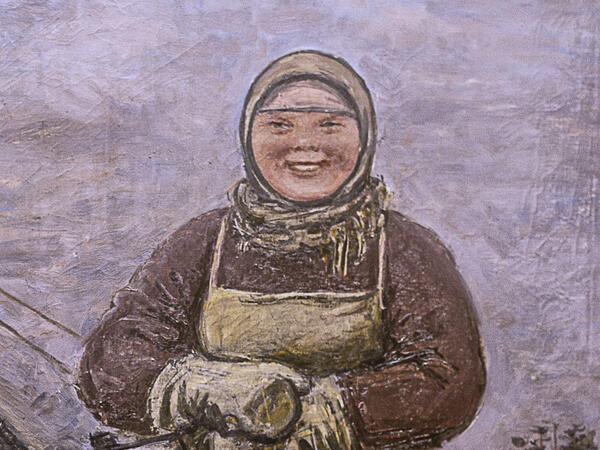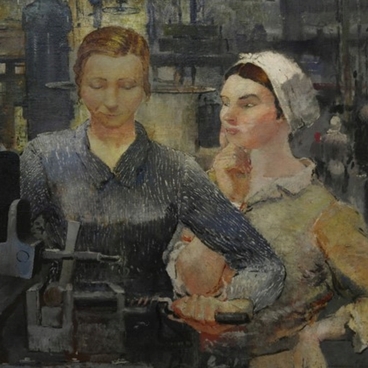During the first five-year plan of the USSR (which was implemented in 1928 and took effect until 1932), a big construction site appeared in Sverdlovsk, marking the start of the famous Uralmash — the Ural Heavy Machine-Building Plant.
The pace of constriction was astounding: the foundation was laid on July 31, 1928, and just five years later, on the very same day, the plant was opened. In order to launch it on time, the plant equipment had to be installed at the same time as the buildings were prepared. Along with that, a new district was under construction to provide housing to future workers — the socialist city Uralmash. The old photographs show countrymen in bast shoes holding axes and shovels in their hands, whose hard work is the reason why that plant was launched on time.
In this painting, Samuil Adlivankin depicted Uralmash builders. The central figure of the picture is a young woman, who shows great skill with a heavy shovel.
Adlivankin was one of the founding members of the New Society of Painters that existed in the 1920s. The society painters created genre paintings with comic inflection, using simplified lines and vivid saturated colors typical of Neo-primitivism. In one of his articles, Adlivankin reminisced about how the Soviet audience reacted to this movement:
The pace of constriction was astounding: the foundation was laid on July 31, 1928, and just five years later, on the very same day, the plant was opened. In order to launch it on time, the plant equipment had to be installed at the same time as the buildings were prepared. Along with that, a new district was under construction to provide housing to future workers — the socialist city Uralmash. The old photographs show countrymen in bast shoes holding axes and shovels in their hands, whose hard work is the reason why that plant was launched on time.
In this painting, Samuil Adlivankin depicted Uralmash builders. The central figure of the picture is a young woman, who shows great skill with a heavy shovel.
Adlivankin was one of the founding members of the New Society of Painters that existed in the 1920s. The society painters created genre paintings with comic inflection, using simplified lines and vivid saturated colors typical of Neo-primitivism. In one of his articles, Adlivankin reminisced about how the Soviet audience reacted to this movement:





